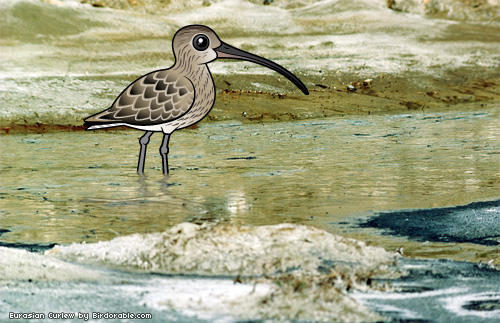10 Facts about the Eurasian Curlew

Here are ten facts about the Eurasian Curlew:
- The Eurasian Curlew is the largest wading bird found in Europe;
- In Scotland it is known as the "Whaup";
- The birds can be found from central and southern Europe and Asia to parts of Africa;
- Curlews are migratory, but are present all year in the milder climate of the British Isles and the adjacent European coasts;
- Within its range the Curlew is most similar to the Whimbrel, but the latter is smaller and has a shorter bill that is less smoothly curved;
- They eat mostly worms, crabs and invertebrates, which they find by touch using their long curved bill to probe soft mud;
- Its name is derived from its 'curloo-oo' call;
- The female is larger and has a longer bill than the male, but the different is not always distinct;
- A group of curlews is called a "curfew", "salon", or "skein" of curlews;
- The species is threatened due to loss and fragmentation of moorland and grassland habitats.
The Eurasian Curlew is the 360th bird species on Birdorable. Check out our Curlew t-shirts and gifts and other Birdorable Plovers & Shorebirds.






Comments
Leave a comment
Thank you!